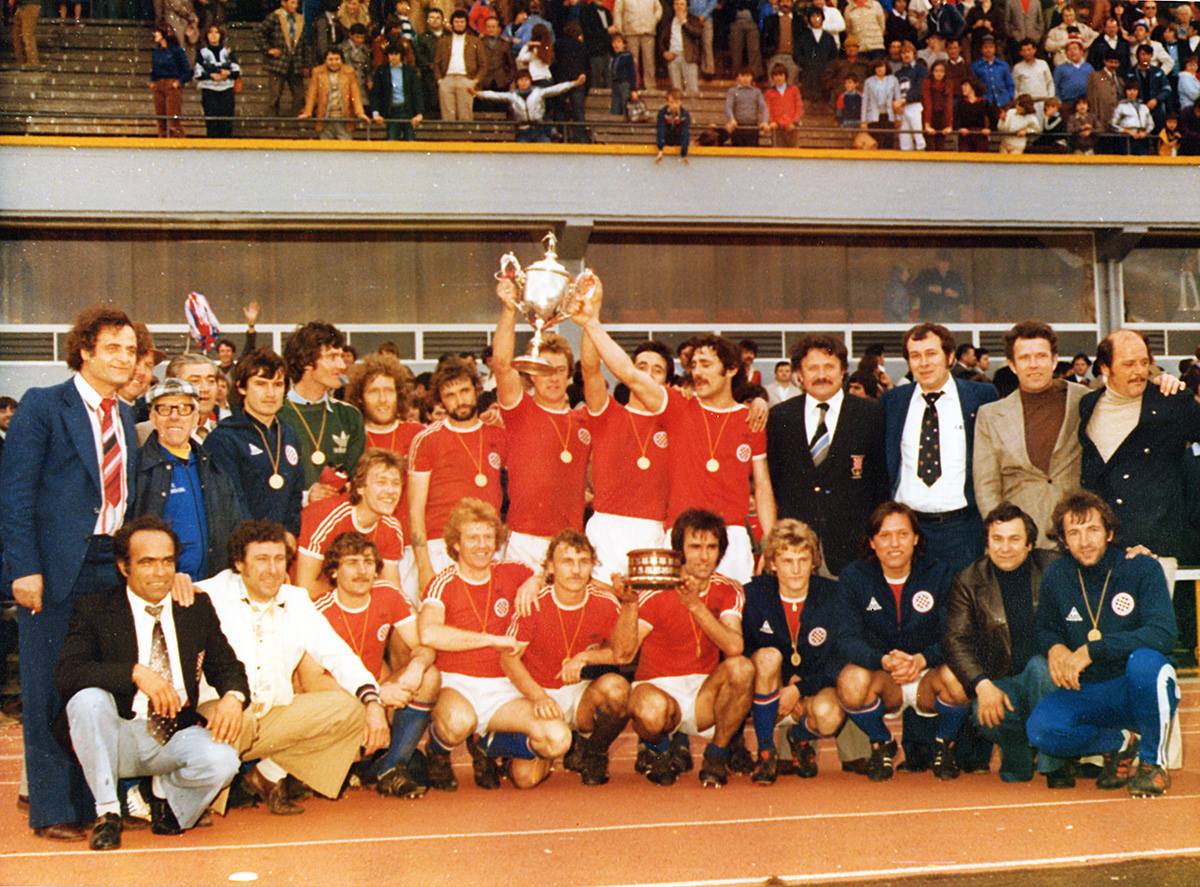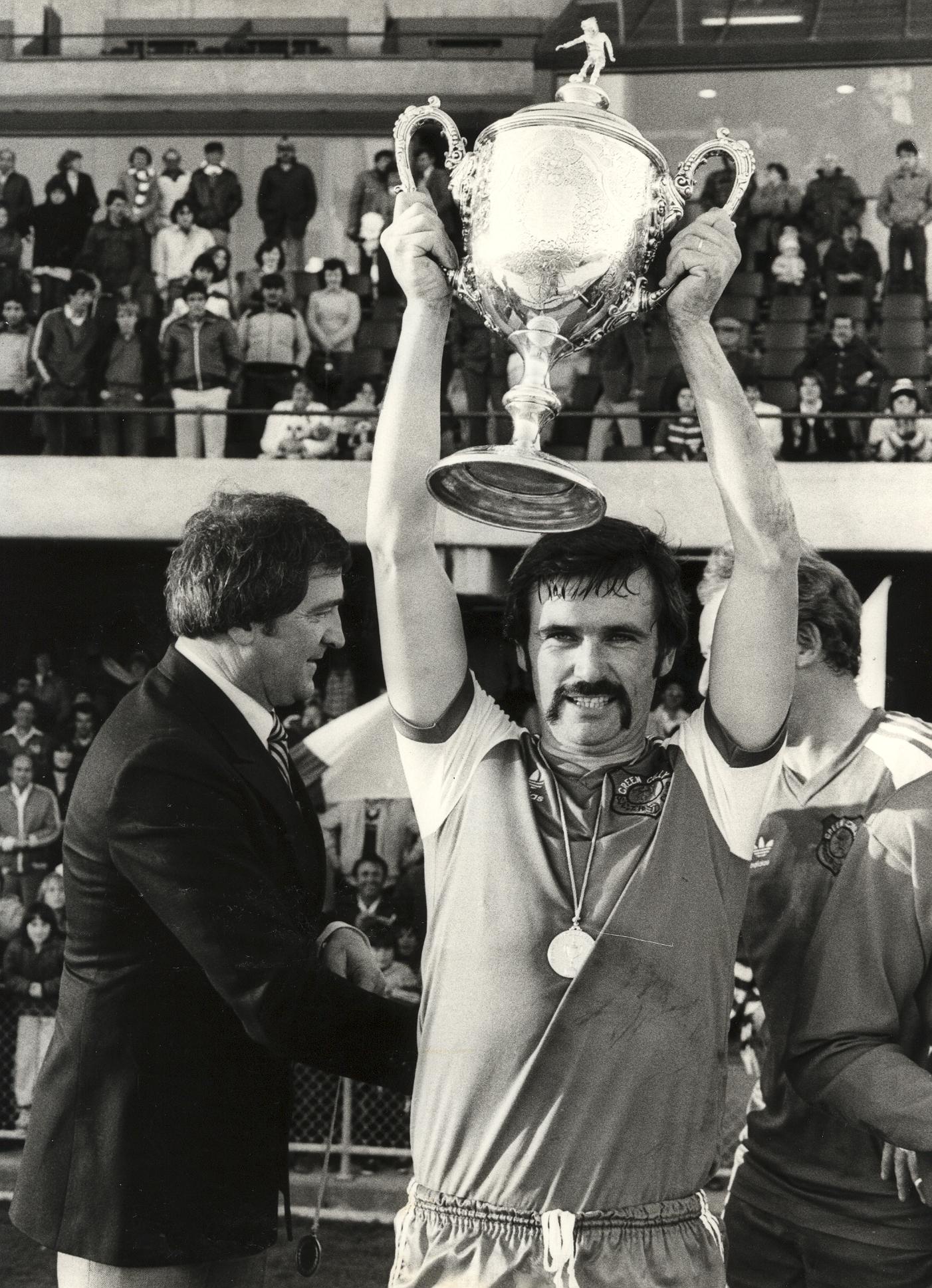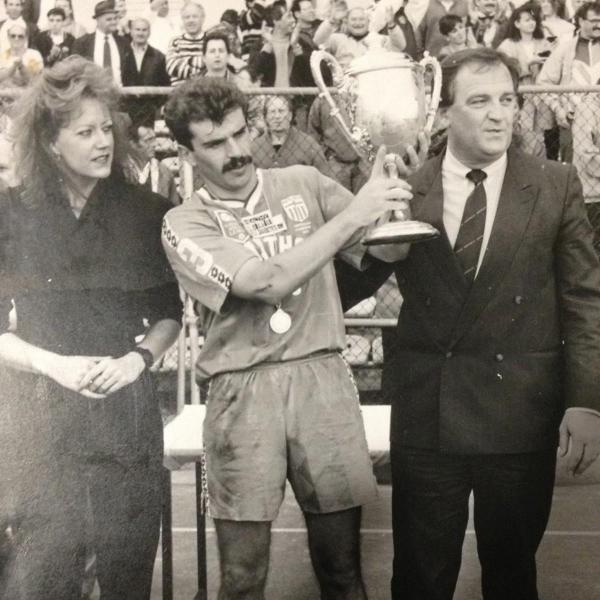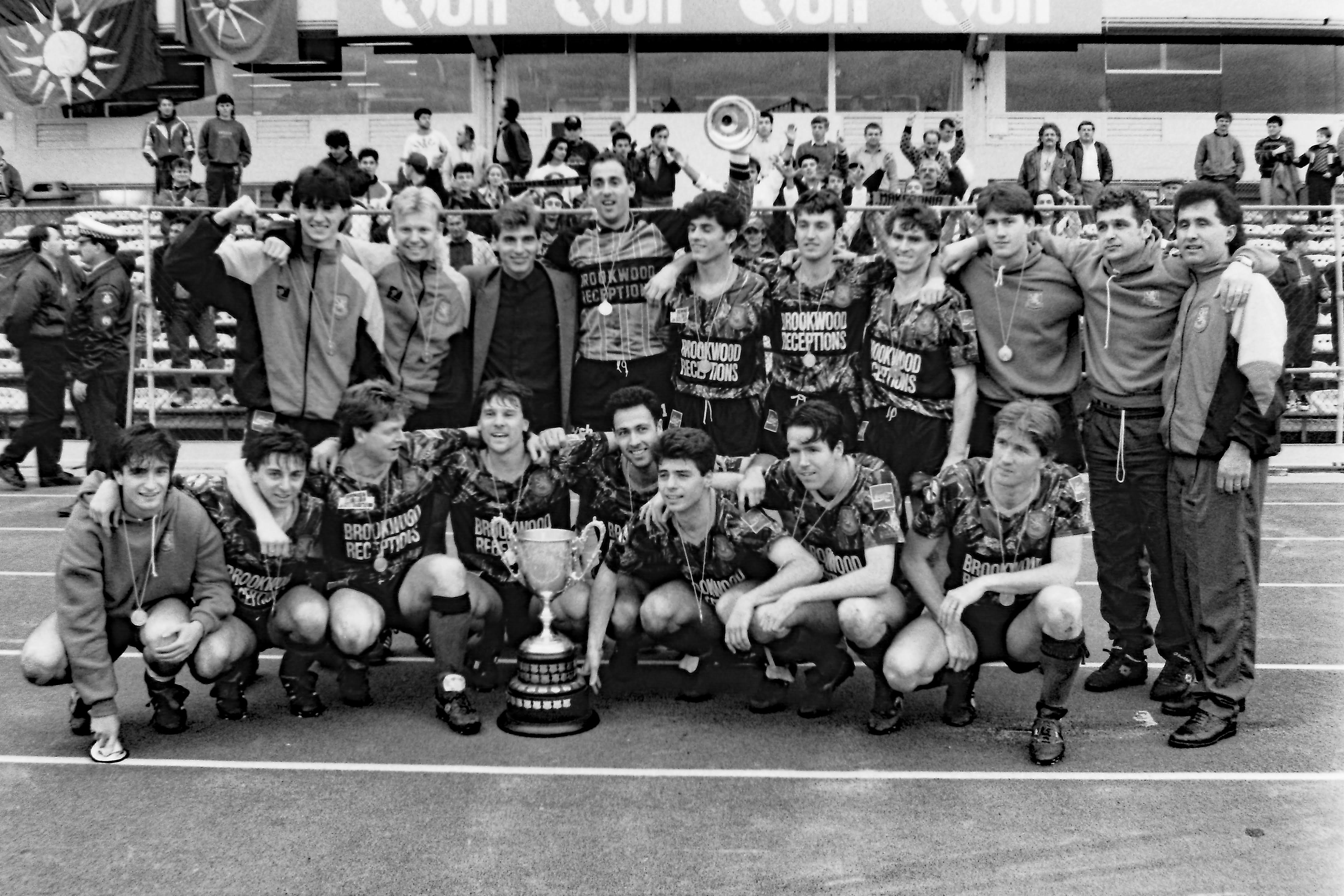In celebration of 100 years of the Dockerty Cup, Football Victoria revisits the Cup’s iconic stature, which serves as a reminder of its many triumphant victors dating back to its inauguration in 1909. In the fourth of a five-part series exploring the history of the Dockerty Cup, Tony Persoglia examines the impact of the NSL and the Dockerty Cup’s eventual demise.
While the birth of the National Soccer League (NSL) in 1977 provided Victorian clubs such as South Melbourne Hellas, Fitzroy United Alexander and Footscray JUST an avenue to test themselves against the best around the country, it did compromise the participation of their senior teams in the Dockerty Cup. With the NSL instituting a domestic cup of its own, the prospect of fielding senior teams in both the NSL Cup and the state federation administered Dockerty Cup proved too difficult to accommodate.
While the NSL clubs would field Reserves teams in the initial years, none progressed much further than the preliminary rounds, and the Victorian State League clubs were left to pick up the pieces in the battle for honours. Despite this, the first edition in 1977 featured a record 93 clubs, with Industrial League teams joining the VSF clubs from the Metropolitan, Provisional and District Leagues.

Juventus defeated Essendon Lions in the Dockerty Cup’s first ever penalty shootout to determine a winner after the teams played out a goalless stalemate. The Lions were an amalgamation of sorts with Croatia expelled by the VSF in 1972, the club eventually taking over the Ukrainian backed Lions and winning promotion to the top flight in 1976. Eventually rebranding as Essendon Croatia, they would assert their dominance in League and Cup once again, achieving the double in 1979 and defending their Cup win the following season with a crushing 7-0 win over Brunswick Juventus, with a hat-trick to Noel Mitten, a brace to Carl Gilder and an opener from player-coach John Gardiner.
Gardiner transferred to Green Gully Ajax the following season, playing under Bobby McLachlan, the Scottish double-act achieving immediate success with back-to-back League-Cup doubles, their second coming with a 3-1 win over Melbourne Croatia, owing in large part to a Paul Lewis hat-trick.

Come 1984, the NSL had expanded to a dual-conference system, with both Melbourne Croatia and Green Gully joining Brunswick Juventus and Sunshine George Cross in being elevated to the national league. By now, the Victorian Soccer Federation had ostensibly banned the NSL clubs from competing in the Dockerty Cup, meaning the competition was without eight of its best clubs vying for honours.
Fawkner, an Italian backed club with lofty ambitions had earned five promotions in six seasons, elevating themselves to top tier status by 1983. A third-place finish in the State League under Gus MacLeod in 1984 was accompanied by Dockerty Cup success, with an extra-time win over Maribyrnong Polonia, a hollow victory given the absence of Victoria’s big guns.
The VSF were swift in restoring the NSL clubs to the competition the following year, with each receiving a bye into the third main round. Melbourne Croatia emerged winners once again, edging Brunswick Juventus in a tight semi-final before a goal in each half to Gary Ward was enough to see them take care of Preston Makedonia in the final. Wins to Gully and Juventus the following two seasons raised questions as to whether the Cup would ever see a State League winner again. Though few would have foreshadowed the controversy that would follow in 1988.
Melbourne Croatia and South Melbourne had won their way to the final, reprising their battle some two decades earlier. On field, the match proved an epic contest, a converted Branko Milosevic penalty in the 82nd minute sending the final into extra time. Goals to Milosevic and Joe Caleta within three minutes of one another saw Croatia stretch out to a 4-2 lead, only to be pegged back to 4-3 by a Paul Foster strike midway through extra time. While Croatia held on for a famous win, the result was overturned for the first time in the Cup’s history following a protest on the grounds that Croatia fielded an ineligible player in the final.

The continued dominance of the NSL clubs was mere formality over the ensuing period. South Melbourne defended their title with a win over Altona Gate (now Altona Magic) in 1989, and followed that with wins every other year in 1991, 1993 and 1995. Their dominance was broken by Melbourne Croatia in 1990, Preston Makedonia in 1992 and a second win from regional Victoria in 1994.
Morwell Falcons, who had exercised an era of dominance in the Victorian State League, had booked their place in the NSL in 1993/94 struggling to a 12th place finish in their inaugural season, but their form in the Dockerty Cup in September was red-hot. A 6-1 quarter-final over Frankston Pines was followed up with a 2-1 upset over defending champions South Melbourne courtesy of a brace to Lachlan Armstrong. They defeated Melbourne Zebras (formerly Brunswick Juventus) in the final 2-1 at Olympic Park, John Waddell’s 64th minute penalty proving the difference.

By 1995, the Dockerty Cup had been restructured into a preliminary group phase, guaranteeing club’s at least three matches before the knockout phase. However, with Victorian Premier League clubs not receiving byes and the absence of any form of regionalisation in the group phase, blowout scores were complimented by numerous walkovers. With NSL clubs entering in the third round proper, the final result proved to be business-as-usual. The following season, Melbourne Knights accounted for Altona Magic 4-2 thanks to a brace from Joe Spiteri and a goal in each half from Lubo Lapsansky and Danny Tiatto.
Ultimately, be it the lack of resources at club level, or the Victorian Soccer Federation’s push to promote the relatively new end-of-season VPL finals format, the Dockerty Cup was not held in 1997, entering an undetermined period of recess. Just how and when it would return is a unique story in itself.
On Friday, in the final instalment of this series, Tony Persoglia explores Cup football’s attempt at a resurgence, and the Dockerty Cup’s return almost two decades later.
